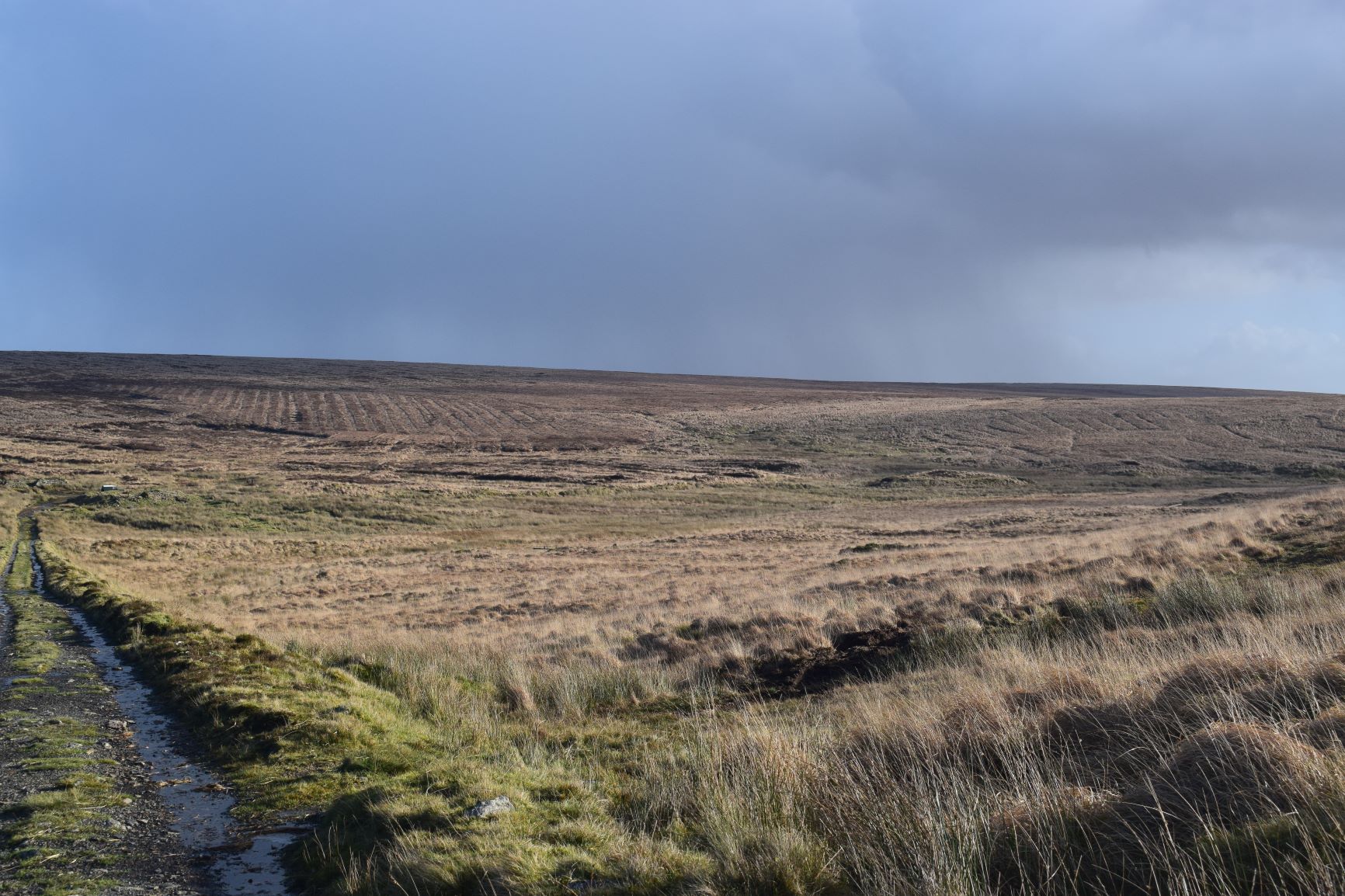Question 2: What has peat got to do with Climate Change?
Restoring mires, peat and bogs
Distribute the photographs in Resource 4 (PDF). What do they show happening?
Large excavators are working on some of the Dartmoor mires – but doing what exactly? Look particularly at the ‘before’ and ‘after’ photographs of the same place at the bottom of the page – before on the left and after on the right.
After discussion and feedback of ideas move on to show the students the film about Winney’s Down.
Over hundreds of years the mires and bogs of Dartmoor have been drained or dried out either for peat digging or so that farm animals can graze the land. Drainage ditches have been dug to drain water away from mires and peat bogs that can be seen from a long way away (see photo below).
For the past ten years or so Dartmoor National Park has been working to restore mires and blanket bogs that have dried out to their original waterlogged condition. Excavators are used to move peat blocks into place in the gullies and ditches which have been dug for peat and farming. These blocks then trap rainwater behind them forming small, shallow pools. These pools provide ideal conditions for bog plants to recolonise naturally and for peat to build up once again.
Mires and climate change
It’s really important to keep the mires waterlogged in order to conserve their biodiversity (all the different species of plants and animals that live in them) but can the students think of any other reasons why it’s vital to keep them wet and not allow them to dry out? As a clue show the graph in Resource 5.
The amount of carbon dioxide in the atmosphere is increasing as a result of burning fossil fuels such as oil (petrol and diesel) and coal and gas (to generate electricity). Carbon is also being released into the atmosphere through clearing and burning forests around the world, known as deforestation. Cutting down forests and burning the wood releases very large quantities of stored carbon dioxide into the atmosphere as plants and trees generate the energy they require to grow through absorbing carbon in the atmosphere and then releasing oxygen as a waste gas – the process of photosynthesis.
Farming also contributes to the release of greenhouse gases. For example the digestive systems of the 70 billion farm animals in the world generate and release huge quantities of methane and nitrous oxide (296 times as potent as a greenhouse gas as carbon dioxide) and methane (23 times as potent as a greenhouse gas than carbon dioxide). Rice (the most important food crop in the world and feeding half the world’s population) is grown mostly in flooded (paddy) fields. Bacteria in the waterlogged soils give off large quantities of both methane and nitrous oxide.
Explain that carbon dioxide is one of several gases in the atmosphere contributing to what geographers call the greenhouse effect – the gradual warming of the Earth’s atmosphere.
One of the marvellous things about mires is that healthy waterlogged peat actually removes carbon from the atmosphere as it forms new layers and increases in depth. It has been estimated that 10 megatonnes (1,000,000,000 kilograms) is already stored in the peat soils of Dartmoor.
If the peat on Dartmoor is left to dry out then the carbon it contains will be released into the atmosphere (a process called oxidation), contributing to climate change. However if the peat mires and blanket bogs of Dartmoor are kept wet and healthy they will continue to grow and remove carbon from the atmosphere at a rate of 0.7 tonnes per hectare per year. This is known as carbon capture or carbon sequestration and is a very important way to help mitigate (make less severe) the effects of climate change.
Activity
As a final piece provide each student with a plain A3 piece of paper and support them to design a poster for Dartmoor National Park with the title 'Marvellous Mires'. The purpose of the poster is to help Dartmoor National Park let people know:
- What a mire is;
- Why the biodiversity of Dartmoor mires is so important;
- How mires help to make climate change less severe by capturing and storing carbon dioxide from the atmosphere.
See the South West Peatland Project page for help.
Extension activity
Now that climate change has been introduced there is scope to follow up with further investigations:
What is Dartmoor National Park doing about climate change?
See the Climate Emergency declaration and Climate Change Action Plan
Finally:
- What are Governments doing about climate change?
- What actions can you take in your household and as individuals to reduce the production of carbon?

